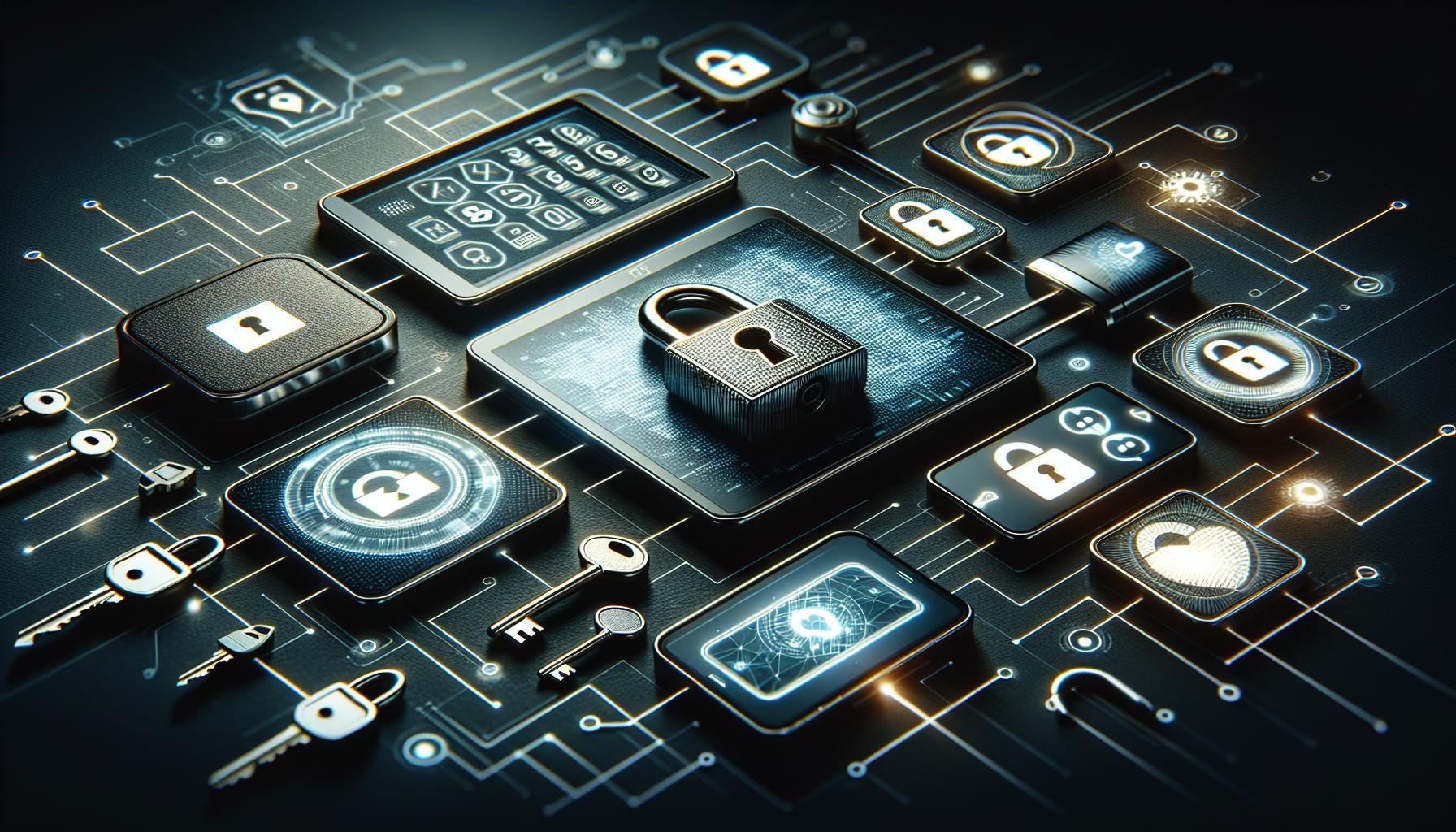Locked out of your Windows 10 account and don’t know how to regain access? Resetting your password doesn’t have to be a daunting task. In this step-by-step guide, we’ll walk you through various methods to recover your Windows 10 password easily and securely, ensuring you can get back to your work without hassle.
Understanding the Importance of Password Management in Windows 10
In today’s digital landscape, effectively managing your passwords is more crucial than ever. With the increasing number of online services requiring unique logins, understanding how to securely handle your passwords can save you from important distress. Having a strong password management strategy not only prevents unauthorized access to your accounts but also simplifies the often cumbersome task of password recovery, especially in the context of Windows 10.
Using Windows 10, Microsoft provides integrated tools to help users manage their passwords securely. One essential aspect is the ability to reset your password efficiently if forgotten. This process is a lifeline for users who may find themselves locked out, and it highlights the importance of maintaining updated recovery options. Start by ensuring that your recovery phone number and email address are both current in your Microsoft account settings. This simple act allows you to initiate a password reset process seamlessly, illustrating that proactive management is as vital as reactive measures when it comes to password security.
Another powerful method for enhancing password security in Windows 10 is through the use of password managers. These tools store and encrypt your passwords,allowing you to use complex combinations without the need to memorize each one. By organizing your passwords in a secure vault, you can ensure that you are not only using strong passwords for all accounts but also reducing the risk of password fatigue, which often leads to the reuse of simple passwords across multiple platforms.Additionally, many password managers can generate strong passwords automatically and alert you if any of your saved passwords have been compromised.
Monitoring your password health regularly is a best practice that can protect your digital identity. Consider periodically revisiting your passwords, updating them in line with best practices, and removing any accounts that are no longer in use.This vigilance minimizes the risk of old, potentially weak passwords causing security breaches. By embracing these steps and familiarizing yourself with how to reset your Windows 10 password through the outlined recovery processes, you not only secure your accounts but also ensure greater peace of mind in an increasingly online world.
Preparing for Password Reset: essential Tools and Resources
When it comes to regaining access to your Windows 10 device, having the right tools and resources on hand is crucial. Forgetting your password can feel overwhelming,but with the right preparations,the recovery process can be straightforward and stress-free. In this guide, we’ll explore essential tools that can facilitate your password reset journey efficiently.
Essential Tools for Password Recovery
here are several reliable tools that you can use to reset your Windows 10 password:
- imyPass windows Password Reset: This software simplifies the password recovery process with high success rates. It’s user-kind and ideal for anyone needing a rapid fix.
- Lazesoft Recover My password: Combining effectiveness with ease of use, this tool is perfect for those who prefer a structured recovery solution without needless complexity.
- PCUnlocker: Known for its versatility, PCUnlocker handles various password types, making it a strong contender for robust password recovery needs.
- Offline NT Password & Registry Editor: This is a free utility that helps reset passwords by modifying the Windows registry. It’s best suited for users who are cozy working with technical interfaces.
Creating a Windows Password Reset Disk
Creating a password reset disk in advance can save you significant time and frustration in the event of a forgotten password. Here’s how to prepare one:
1. Insert a USB drive into your computer.
2. open the Control Panel, navigate to User Accounts, and select “Create a password reset disk.”
3. Follow the prompts to create the disk. Make sure to store it in a safe place.
By preparing this tool, you ensure a smoother recovery process, making it easier to regain access with minimal hassle.
Cautionary Measures and Best Practices
While preparing for a password reset, it’s significant to implement good security practices to avoid future lockouts:
- Use a password manager: This can help you store complex passwords safely and make it easier to recover them if forgotten.
- Enable two-factor authentication: Adding an additional layer of security can reduce the likelihood of lockouts and unauthorized access.
- Regularly update and back up: Keeping your system updated alongside regular backups can mitigate the risk of password-related issues.
Leveraging these tools and practices will create a solid foundation for navigating the process of resetting your Windows 10 password. By preparing ahead,you can transform a potentially daunting challenge into a manageable task,helping you maintain control of your digital environment.
Step-by-Step Guide: Resetting Your Microsoft Account Password
Resetting your Microsoft account password is a crucial action, especially if you’ve received unrequested password reset codes or if you suspect unauthorized access. Whether you’re locked out of your account or simply want to enhance your security, following a structured approach is vital for a smooth recovery process. Here’s a step-by-step guide to help you regain access to your Microsoft account efficiently.
Initiating the Password Reset Process
To start the password reset, navigate to the Microsoft account sign-in page. Click on “forgot password?” This will direct you to a recovery form were you’ll need to input your email address associated with your account.Make sure to double-check for any typographical errors to avoid frustration.
Once you’ve submitted your email, Microsoft will present several recovery options, depending on the security information you have added to your account. This may include receiving a security code via email or SMS. Choose the most convenient method to retrieve your security code. If you don’t have access to any method listed, you will need to go through the account recovery form for further instructions.
verifying Your Identity
After receiving the security code, enter it in the designated field on the Microsoft webpage. This step verifies that you are indeed the owner of the account and protects it from unauthorized access. Should you encounter issues such as too many requests for codes, consider waiting for a period before trying again, as detailed in discussions on the Microsoft support forums [[2](https://answers.microsoft.com/en-us/outlook_com/forum/all/youve-requested-too-many-codes-today-please-try/aceb0678-e149-4da3-86c2-a709ae2001f7)].
To enhance your account’s security, it’s best practice to reset your password to something strong and memorable, mixing uppercase and lowercase letters, numbers, and special characters. After successfully entering your code and accessing the next screen, follow the prompts to create your new password.
Final Steps and Security Recommendations
Once your password is reset, take the time to review your account security settings. Enable two-factor authentication if you haven’t done so already, as this adds an extra layer of protection. In addition,consider checking recent sign-in activity,which you can find in your Microsoft account settings. This will help you spot any unauthorized access or unusual activities.
If at any point you feel overwhelmed or uncertain, don’t hesitate to utilize Microsoft’s support resources, including their recovery form, which can guide you through complex issues [[3](https://answers.microsoft.com/en-us/msoffice/forum/all/onmicrosoft-account-password-reset/31d5ebff-5ee4-4a7d-ad18-b03b2310cc8a)].
By following these outlined steps, you can confidently reset your Microsoft account password, securing your account against potential breaches and ensuring your online safety.
Using Local Account Options: How to Change Your Windows 10 Password
If you find yourself forgetting your current password or simply want to enhance your security, changing your Windows 10 password is an essential step.Utilizing local account options not only provides a straightforward approach to password management but also allows you to customize your recovery process. Understanding how to reset your Windows 10 password effectively can save you from potential access issues down the road.
Changing Your Password Through Local Account Options
Changing your password in Windows 10 through local account options is a user-friendly process. Follow these steps to effectively modify your password:
- Open the Settings app by clicking on the Start menu and selecting the gear icon.
- In the Settings window, navigate to Accounts and then click on Sign-in options in the left sidebar.
- Under the Password section, you’ll see an option to Change. Click on it.
- Enter your current password when prompted.
- Next, enter your new password and confirm it. You may also add a hint to jog your memory.
- Click Next and then Finish to complete the process.
Tips for a Strong password
When changing your password, it’s crucial to create one that is both secure and memorable. Consider the following guidelines to enhance your password strength:
- Length: Make your password at least 12 characters long.
- Complexity: Use a mix of upper and lower case letters, numbers, and special characters.
- Avoid Personal Information: Don’t use easily obtainable information,such as birthdays or names.
- Passphrases: Consider using a memorable phrase or a combination of unrelated words.
Additional Recovery Options
If you ever find yourself locked out despite having set up a password, knowing the password recovery options is vital. Here’s a brief overview of common methods to recover or reset your Windows 10 password:
| Recovery Method | Description |
|---|---|
| Password Reset Disk | A previously created USB drive to reset your password. |
| Microsoft Account | Use the forgot password link to reset via email or SMS verification. |
| Safe Mode | Boot into Safe Mode and access the hidden admin account to reset. |
By staying proactive about your password management through local account options, you can secure your Windows 10 experience and swiftly navigate the challenges of password recovery when necessary.
Exploring Advanced Recovery Methods: What to Do When All Else Fails
When faced with a seemingly insurmountable challenge of accessing a Windows 10 device due to a forgotten password, many users find themselves at a loss. Traditional methods, while effective for most, can sometimes fall short, leaving individuals feeling stranded without their important files. Though, there are advanced recovery options that can serve as lifelines in such desperate moments.
Utilizing Password Reset Disks
If you’ve prepared ahead of time by creating a password reset disk, this can be your best ally when all else fails. A password reset disk acts as a key to unlock your device. To utilize this method, follow these steps:
- Insert the password reset disk into your computer.
- when prompted after an incorrect password entry,click on ‘Reset Password.’
- Follow the instructions provided in the password Reset Wizard to create a new password.
Should you not have a reset disk on hand, deploying third-party Windows password recovery tools becomes a viable alternative.
Third-Party Password Recovery Tools
There’s a variety of third-party applications designed to assist in recovering Windows passwords. Tools like Ophcrack,PCUnlocker,and iSeePassword can come to your rescue,offering user-friendly interfaces to navigate the recovery process. Here’s a brief overview of how to leverage these tools:
- download and Create Bootable Media: Using another computer, download the chosen software and create a bootable USB drive or CD/DVD.
- Boot from the Media: Insert the bootable drive into the locked computer and restart it. Access the BIOS setup (usually by pressing F2, F10, or DEL during startup) and change the boot order to prioritize your external media.
- Recover the Password: follow the application’s prompts to either reset your password or create a new one.Make sure to take notes on any steps for future reference.
Utilizing these advanced methods can sometimes feel daunting, but they frequently enough provide a crucial way to regain access without losing your data.
Professional Data Recovery Services
If you find that software solutions prove ineffectual, professional data recovery services can provide peace of mind. While this method is more costly, it is sometimes the most reliable solution for serious cases of password lockout, especially when valuable data is at risk. When choosing a service, ensure they have strong credentials, customer reviews, and the ability to handle sensitive information responsibly.
Factors to consider when selecting a service include:
| Criteria | Importance |
|---|---|
| Reputation | High |
| success Rate | High |
| Cost | medium |
| Data Security | High |
Navigating the complexities of password recovery can be challenging, but with the right approach, you can overcome even the toughest obstacles. Embrace these advanced recovery methods and ensure that you’re well-equipped should the need arise.
Tips for Creating a Strong Password and Enhancing Account Security
Creating a robust password is a fundamental step in safeguarding your online accounts, especially in a digital landscape where cyber threats are ever-present. A strong password acts as your first line of defense against unauthorized access, making it crucial to avoid common pitfalls that can compromise your security.Here are essential strategies to enhance your password strength and overall account protection.
Characteristics of a Strong Password
When crafting your password, consider the following essential features:
- Length: Aim for a minimum of 12-16 characters. Longer passwords are significantly harder to crack.
- Complexity: Incorporate a mix of uppercase letters, lowercase letters, numbers, and symbols to increase susceptibility against brute-force attacks.
- Avoid Common Words: Steer clear of easily guessable information, such as names, birthdays, or dictionary words. Cybercriminals often employ complex tools that can quickly crack these password types.
Using a Password Manager
Managing multiple strong passwords can become cumbersome, which is where password managers come into play. These tools not only generate complex passwords but also securely store them, simplifying your login process without sacrificing security. Moreover, many password managers alert you to reused or weak passwords, allowing you to update your credentials accordingly.This is notably useful when considering recovery methods, like outlined in the article on resetting Windows 10 passwords, as a secure management strategy reduces the risk of losing access to your accounts.
Regularly Update your Passwords
Setting a schedule to change your passwords can further bolster your security.For instance, consider updating your passwords every 3-6 months, particularly for sensitive accounts related to banking or personal information. Additionally, enable notifications for any unauthorized access attempts and promptly change your password if a breach is suspected.Remember, even the strongest password can be compromised, so always enable two-factor authentication (2FA) where available. This added layer of security ensures that even if someone manages to gain access to your password, they will still require a second form of identification, further protecting your accounts against unauthorized access.
Implementing these recommendations not only enhances your password security but also fortifies your overall digital presence, making the process outlined in “how to reset Windows 10 password: Step-by-Step windows 10 Password Recovery” easier and more secure.
Frequently Overlooked Features: Using Safe Mode for Password Recovery
Utilizing Safe Mode for password recovery can be an invaluable tool for those who may have forgotten their Windows 10 passwords. Safe Mode allows the operating system to run with minimal drivers and services, enabling users to access the system more easily when troubleshooting issues. While many users might overlook this feature, knowing how to boot into Safe mode can ease the stress of password recovery, making it a handy method worth considering.When you find yourself locked out of your Windows 10 account, booting into Safe Mode is a straightforward process. You can initiate this by restarting your computer and pressing the F8 key multiple times before the Windows logo appears. Alternatively, if you’re unable to access the login screen, interrupt the boot process by turning off your PC three times, which will invoke the Windows Recovery Environment. From there, navigate to Troubleshoot > Advanced options > Startup Settings and then reboot into Safe Mode. This method not only allows access to the system but can also help in accessing the built-in Administrator account,which is often overlooked during regular boot processes.
Once in Safe Mode, you can perform a few key tasks that might help reset your password. If there’s another account with administrative privileges accessible, you can log in and reset the locked account’s password via the Control panel or Settings.Another option involves using command prompt commands such as net user, which can reset the password if you have access to the Administrator account. Consider this method a safety net — it’s a backup plan that leverages Windows’ own features, often forgotten in the typical recovery process.
Key Steps for Using Safe Mode to Recover Password:
- Access Safe Mode: Restart and press F8 or stop the boot process thrice.
- Log in to Administrator: Use the built-in administrator account to change passwords.
- Use Command Prompt: Execute password reset commands if necessary.
Incorporating Safe Mode as a step in your password recovery strategy can provide peace of mind and restore access to your essential files and applications. Recognizing the features available within Windows 10 can significantly reduce the anxiety associated with being locked out of your system, demonstrating the importance of this frequently enough-overlooked recovery method.
Q&A
How to reset Windows 10 password: Step-by-Step windows 10 Password Recovery?
The quickest way to reset your Windows 10 password is to use a password reset disk or a microsoft account. If you are locked out of your device and don’t have a reset disk, you can use Microsoft’s online account recovery options to regain access.
To create a reset disk, you must do so while logged in to your account.Alternatively,using a Microsoft account makes it easier to reset your password online. For detailed steps, check our guide on how to recover your Microsoft account.
What is a Windows 10 password reset disk?
A Windows 10 password reset disk is a tool designed to help you reset your local account password. It is created in advance,while logged into your account,and it can save you from being locked out.
To create one, you need a USB drive or floppy disk. If you forget your password in the future, you can use this disk to reset it without data loss. Remember, this method only works for local accounts and not for Microsoft accounts.
Why does my Windows 10 password keep getting rejected?
Your Windows 10 password may be rejected due to typing errors, Caps Lock being on, or recent changes you’ve made. Additionally, if your account is linked with a Microsoft account, a sync issue may occur.
Always double-check for typos, and ensure that your keyboard layout is correct. If you’ve recently changed your password on another device, ensure those changes sync properly. If issues persist, try using the password reset options outlined in the guide on how to reset your Windows 10 password.
Can I reset my Windows 10 password without a reset disk?
Yes, you can reset your Windows 10 password without a reset disk by using your Microsoft account or recovery options. If you set up a Microsoft account, you can reset your password online.
To do so, navigate to the Microsoft account password recovery page and follow the prompts. You may also need to answer security questions if prompted.For more options on securing your account, view our full guide on Windows 10 password recovery methods.
What should I do if I forgot my Microsoft account password?
If you forgot your Microsoft account password, you can reset it through the Microsoft password recovery website. Simply provide your email or phone number associated with your account, and follow the recovery steps.
After initiating the recovery process, you will recieve a verification code via email or SMS. once you’ve entered the code, you can create a new password. This process is straightforward and ensures your account remains secure.
Why is it important to change your Windows 10 password regularly?
Changing your Windows 10 password regularly helps enhance your account security and protect your personal data from unauthorized access. Being proactive about password changes minimizes risks associated with potential hacking.
Additionally, using strong, unique passwords for your accounts helps safeguard your sensitive information. Remember not to share your password and consider using a password manager to keep track of different accounts and passwords securely.
Can I recover my files after resetting my Windows 10 password?
Yes, you can recover your files after resetting your Windows 10 password, as the password reset process does not delete your personal data. Your documents, photos, and other files will remain intact unless you opt to reset your PC.
However, if you had to reset your PC due to a forgotten password, you may lose files depending on the reset option selected. Always back up important files to ensure their safety. For more on recovery options,view our guide on Windows 10 backup and recovery methods.
wrapping Up
resetting your Windows 10 password doesn’t have to be a daunting task. By following the clear, step-by-step instructions outlined in this guide, you can regain access to your device with confidence. Remember, whether you choose to use the password reset disk, your Microsoft account, or a third-party tool, each method is designed to help you through this process smoothly.
As technology can sometimes feel overwhelming, we encourage you to take your time and explore each option thoroughly to find the solution that best fits your situation. Your device’s security is paramount, and understanding these recovery methods not only empowers you but also enhances your overall digital literacy.
If you have questions or need additional assistance, don’t hesitate to dive deeper into our resources or engage with our community for support. Stay informed and proactive about your technology so you can navigate any challenges that come your way with ease!






